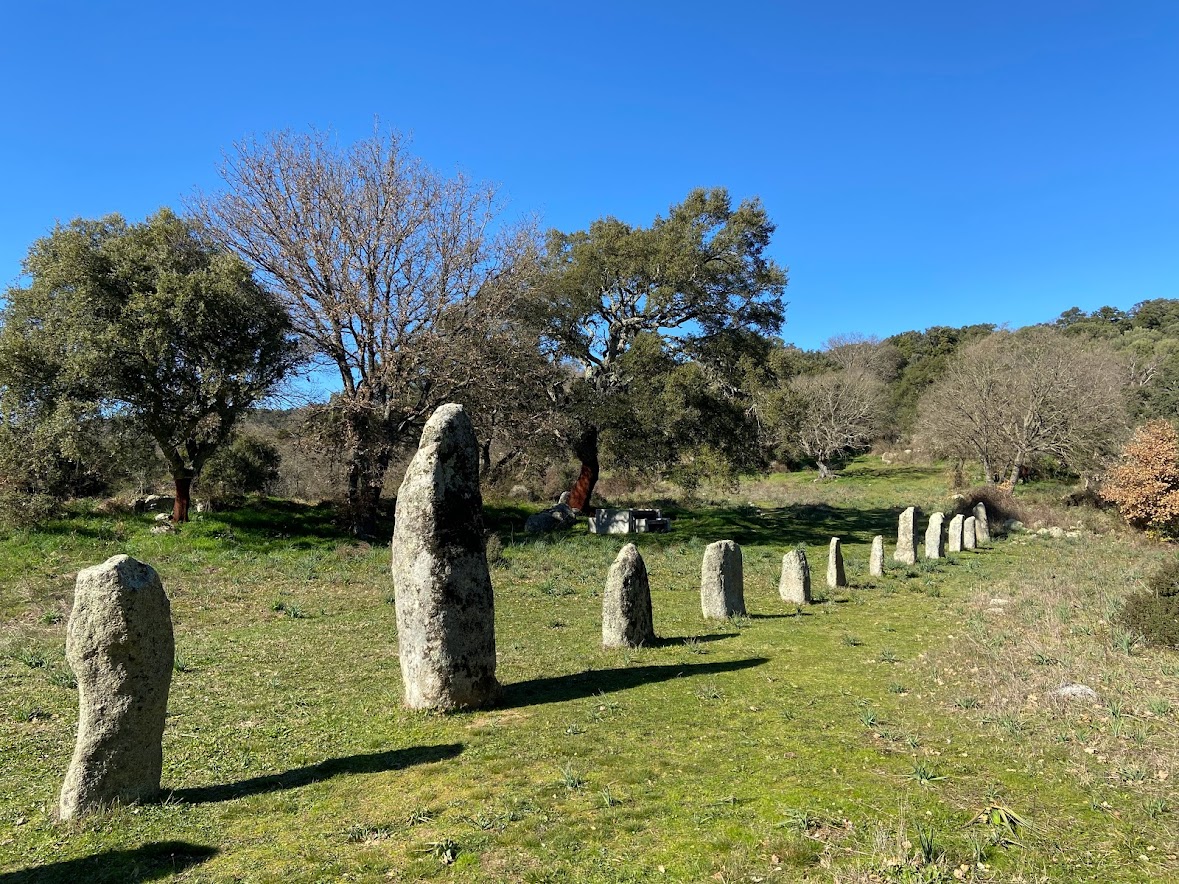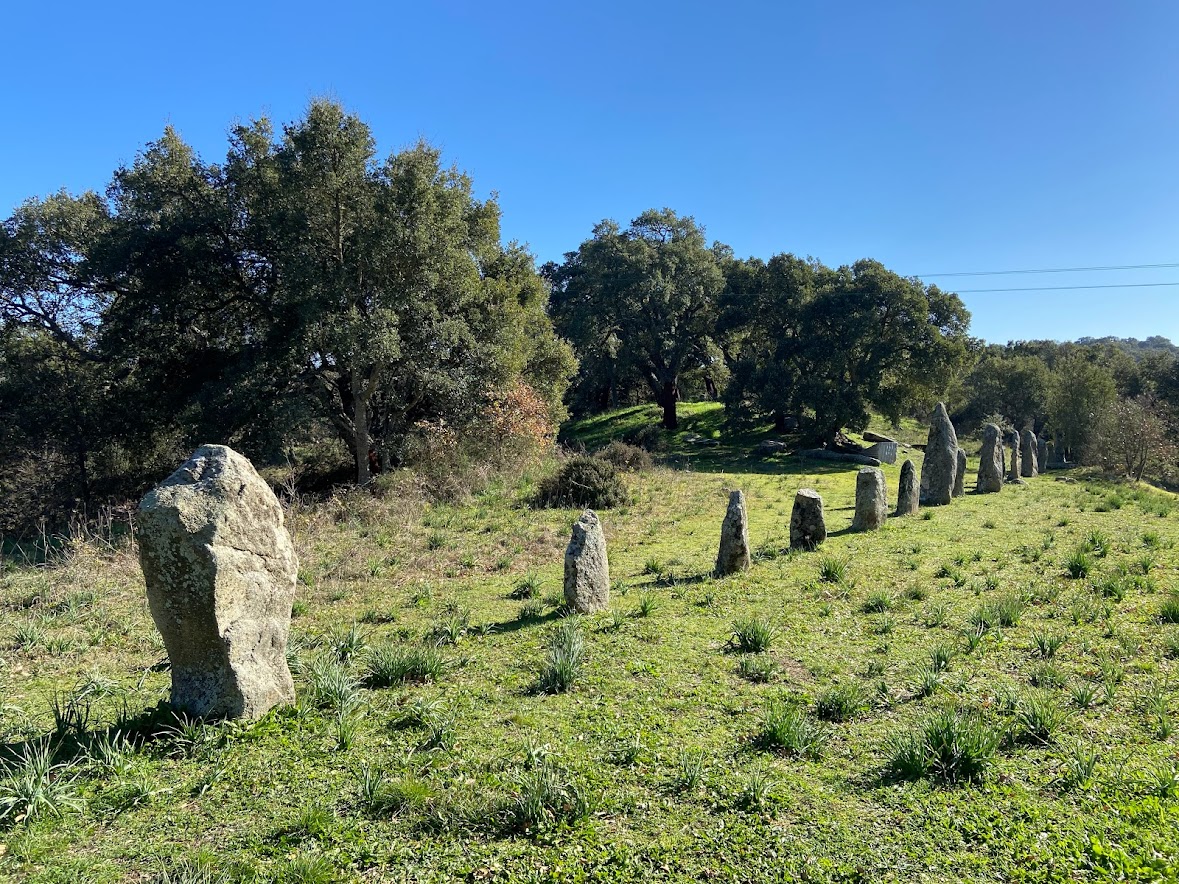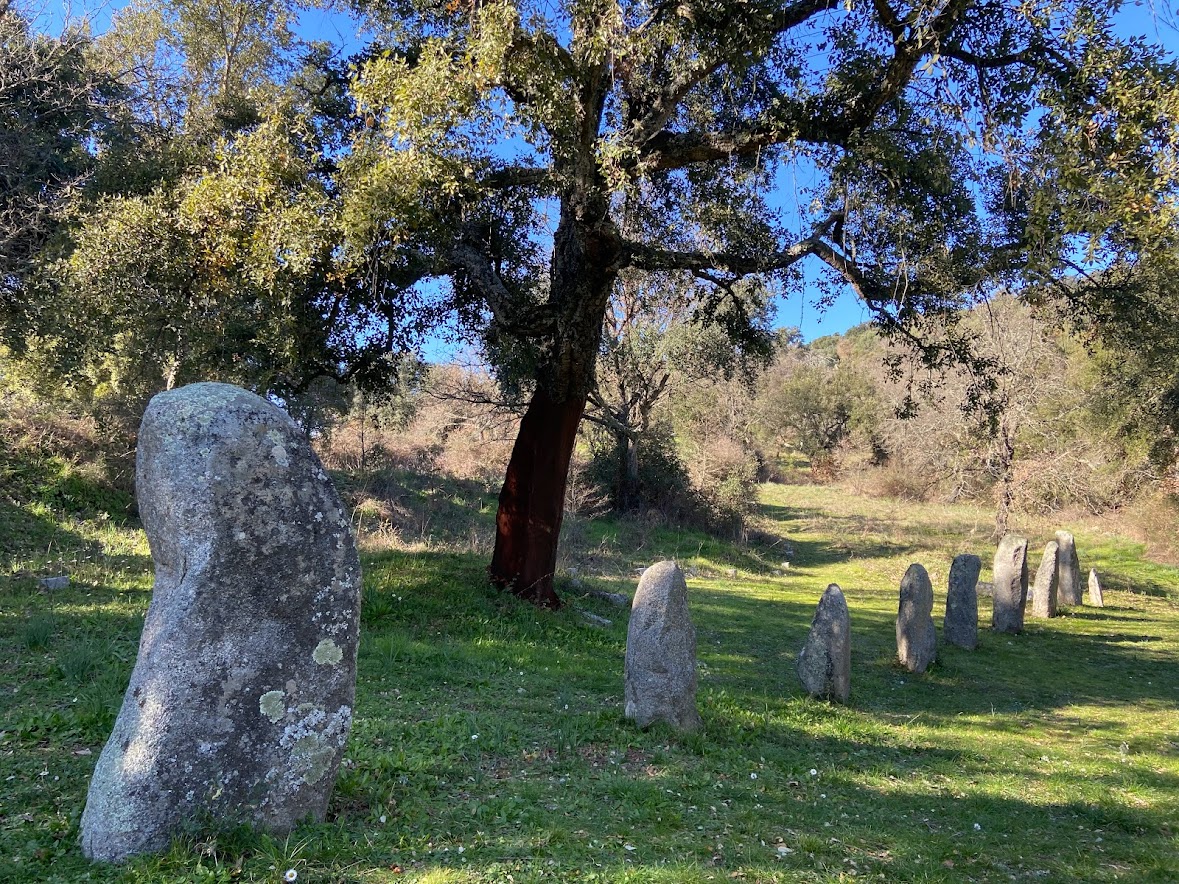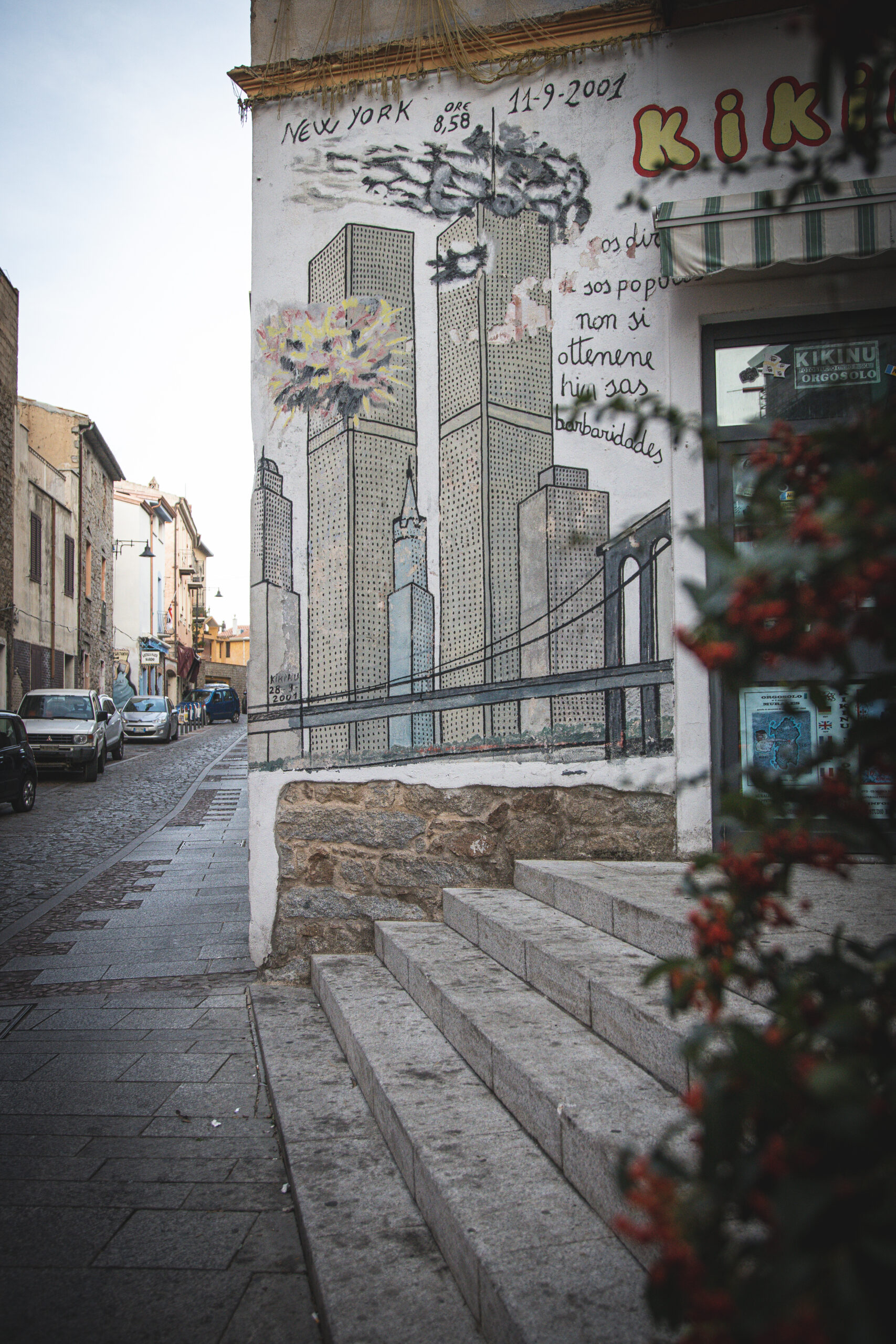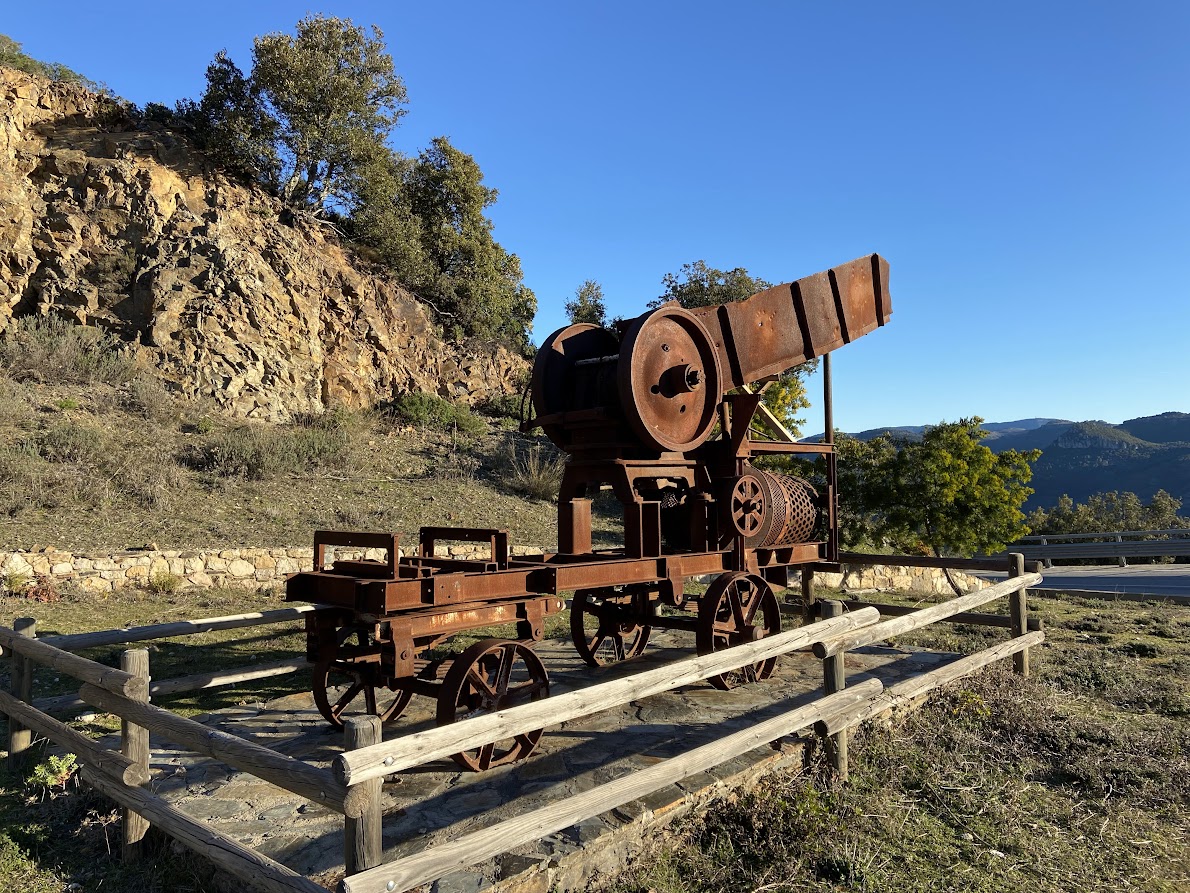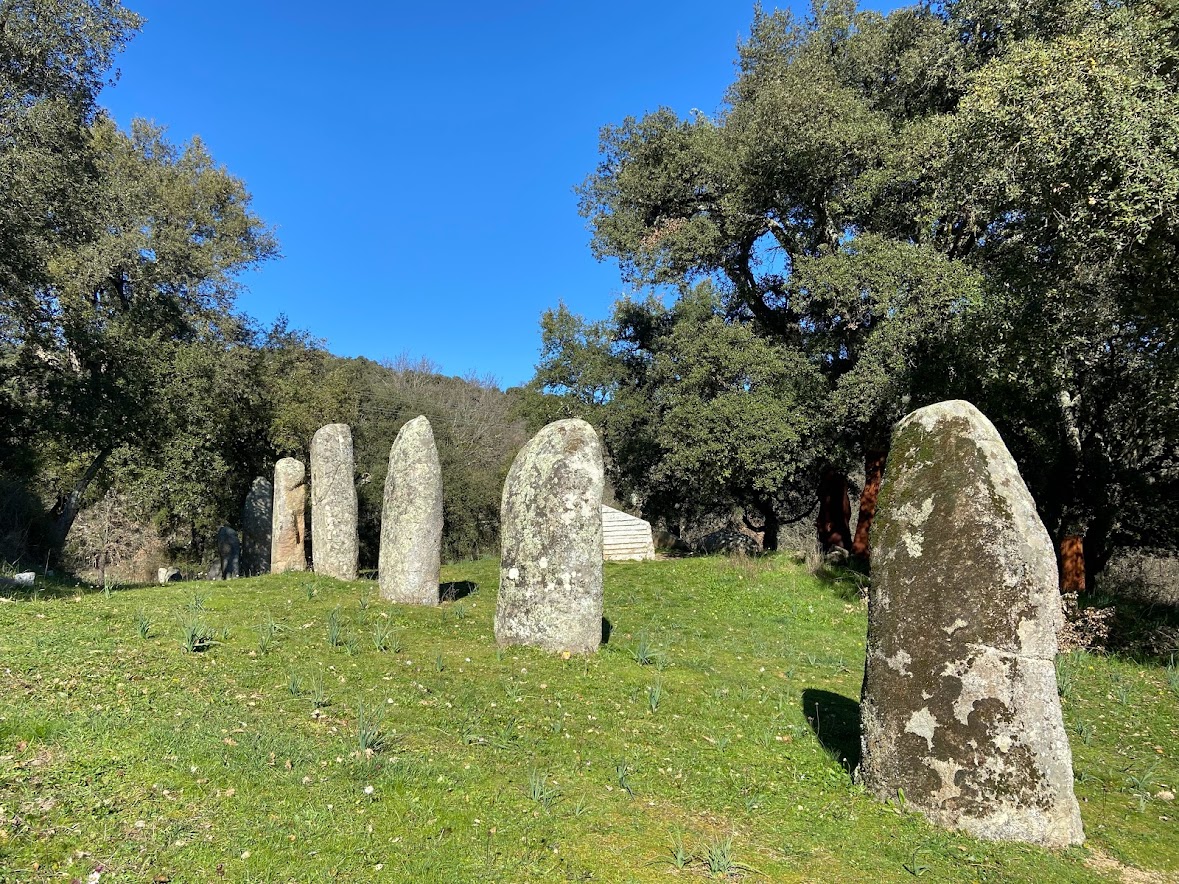
Perdas Fittas
Places shrouded in legend and mystery, a world of ancestors that speaks through giant stones. The Menhirs of Perdas Fittas are a gateway to the divine, surrounded by a fairytale landscape of ancient oak forests, meadows of sowbread and wild orchids, lavender and myrtle bushes that perfume the air. They folded the huge stones to connect with the deities, who were asked for blessings during conception, childbirth, for the fertility of the fields, or during the transition to the afterlife. The ritual consisted of touching the menhirs with the hands and abdomen, dousing them with liquids and decorating them with acceptance gifts. Even after five thousand years, their sacred character is still alive. Until the beginning of the 20th century, pious people stopped by to pray and several perdas fittas have since taken on the names of saints. In the beginning, about 5 thousand years ago, menhirs were shaped only by wind and water, later they were engraved and carved and took on more humanized forms, probably to celebrate the ancestors. Their sanctity has lasted for millennia, and the bond with the archaic roots they acquired was so accepted by the church that Pope Gregory the Great described the Sardis as “stone worshippers” in the late sixth century. Their sanctity has lasted for millennia, which is why Pope Gregory the Great at the end of the century described the Sardinians as “worshippers of stones.” Other popes, as well as some kings, including Charles the Great, ordered the demolition of menhirs. Despite the demonization, not everything got lost, and about a thousand menhirs still stand scattered across the island. You can soak up the magical atmosphere in Pranu Mutteddu in Goni and Bir´e Concas in Sorgono, in the green heart of the island, where hundreds of menhirs are concentrated: alone, in pairs, in circles or in long rows symbolizing cult paths, perhaps based on celestial phenomena. The magic, sacredness and magnetic power is similar to the famous Stonehenge, but here the menhirs are older and more numerous. You can also find Perdas fittas by the sea, e.g. in Cuili ´e Piras or Castiadas, where there are over 50 of them. A few dozen kilometers from Oristano is the Villa Sant’Antonio menhir valley, and on Corru Tundu you will find the highest menhir on the island. On some hiking trails and roadsides, you will come across many lonely menhirs that still stand at the place of ancient crossroads. Some menhirs guard tombs and are often carved with spirals, concentric circles, human figures and small hollows, “coppelle”, a codified language well known in Italian prehistory. An example is the “Stele di Boeli” menhir, also known as Sa Perda Pint’a – a large granite sculpture with deeply engraved characters, finely decorated with drawings and carvings, which is proudly displayed at the entrance of Mamoiada. Over time, some menhirs lost their sacred aura and became mere fossils. In Sant’ Antioco, there are two menhirs, su Para ´e sa Mongia, a monk and a nun who, according to the legend, were punished by the wrath of God during their escape. In Villaperuccio, near the necropolis of Montessu, there is a menhir of Luxia Arrabiosa, the beautiful Jana, a bit of a fairy and a bit of a witch who lives in folk fairytales. Traces of the legendary Luxia can also be found on Prabanta Hill, next to Mount Arci, where a pair of Turra ´e sa Cullera (Ladle and Spoon) menhirs are named after her in the Simala area. In Allai, in Ruinas and above all in Laconi, you can admire the most advanced menhirs with carved stylized human figures: you can recognize the nose and eyebrows, anatomical details, clothes and weapons. The surface was usually engraved with two superimposed ornaments – the “inverted” spirit of the deceased, which also appears on the rock tombs of the Saxon Concas at Oniferi, and a “double-edged dagger” similar to Egyptian hieroglyphs and representing the womb. Together, the engravings represent the human soul returning to earth through its mother. Laconi is also home to the Menhir Museum, which exposes 40 extraordinary works of art created during the Copper Age, at the end of the 3rd millennium BC.
